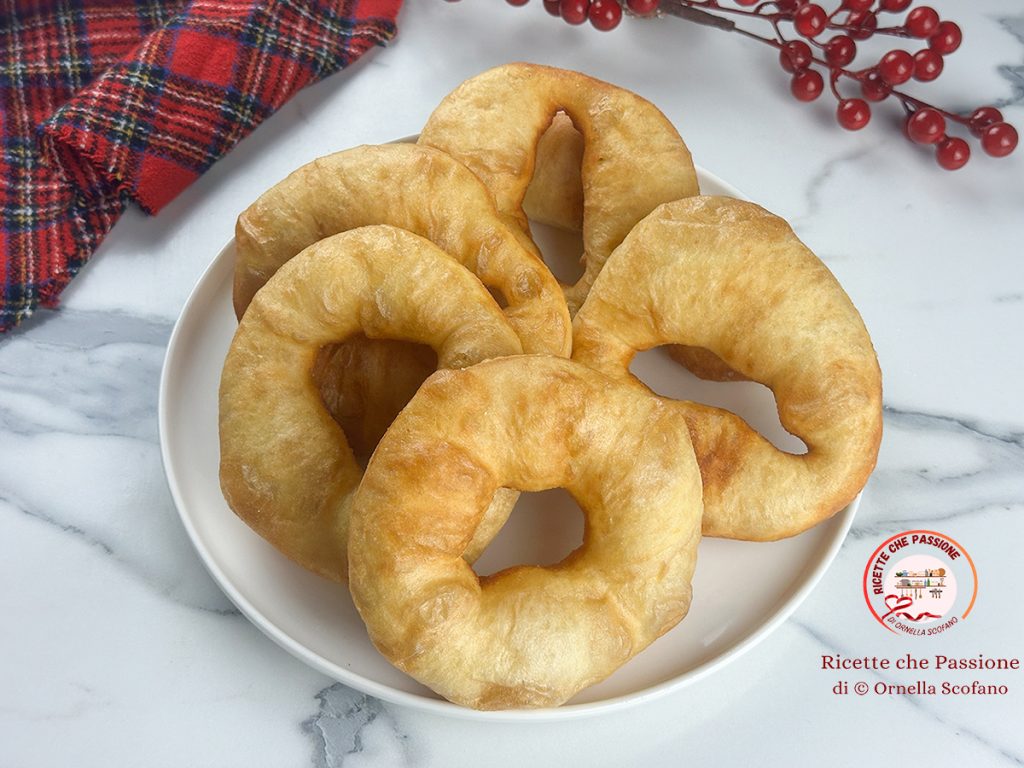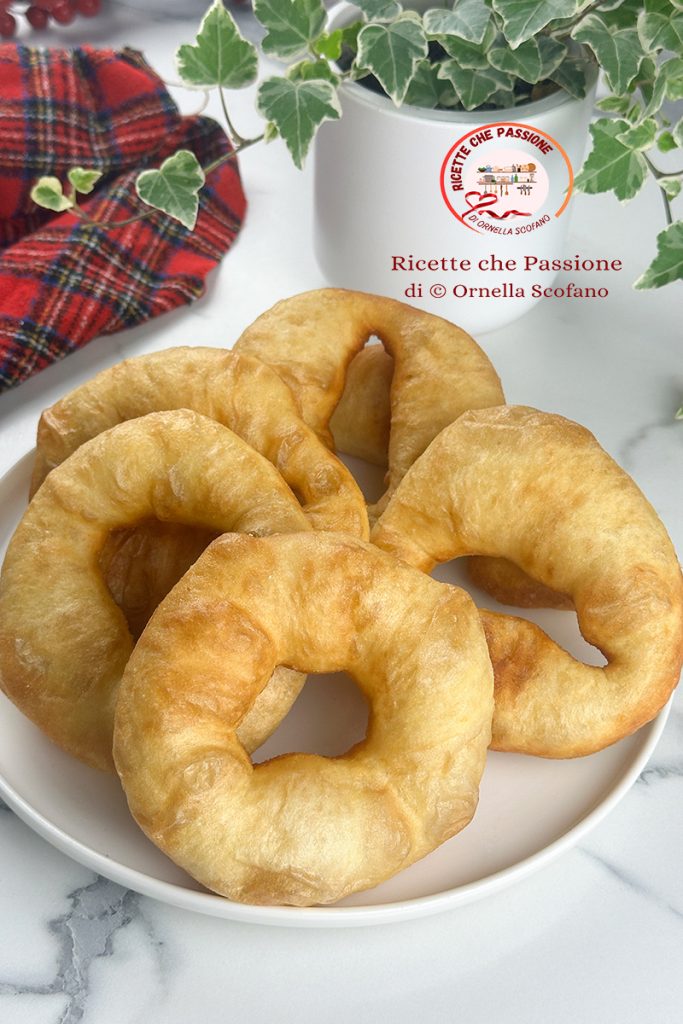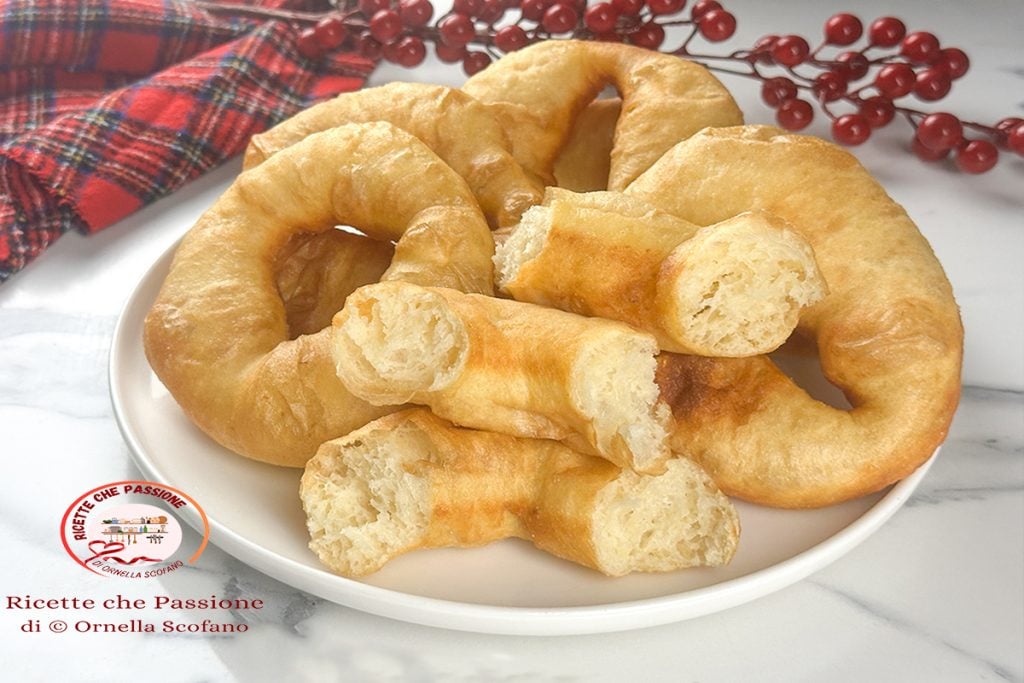Calabrian Grispelle with potatoes, the traditional recipe for the Immaculate Conception, also prepared on Christmas Eve, sometimes stuffed, but today we focus on the classic ring-shaped ones, known as zippule, cullurielli, crispedde, depending on the location. Today I want to introduce you to the recipe prepared in the Lametino area, a soft and fluffy version made only with potatoes and flour, with very little water, just enough to dissolve the yeast, unlike other variants from outside the Lametino area that use a reduced amount of potatoes for puffier and lighter crispelle, but all equally delicious. These remain soft for several days, but are best enjoyed hot, even rolled in sugar for a sweet version, or in honey.

- Difficulty: Easy
- Cost: Very inexpensive
- Rest time: 4 Hours
- Preparation time: 1 Hour
- Portions: Approximately 10 pieces
- Cooking methods: Boiling, Frying
- Cuisine: Italian
- Seasonality: All seasons, Christmas
Ingredients for Lametino Calabrian Grispelle with Potatoes
- 3 1/3 cups all-purpose flour
- 14 oz boiled potatoes
- 3 1/2 tbsp lukewarm water
- 0.18 oz fresh yeast
- 2 tsp salt
- Sunflower oil for frying
- as needed Flour for working
Tools for Preparing Calabrian Grispelle with Potatoes
- 1 Pot
- 1 Potato masher
- 1 Bowl
- 1 Plastic wrap
- 1 Frying pan
- 1 Work surface
- 1 Bench scraper
Steps to Prepare Calabrian Grispelle with Potatoes

We start by preparing the potatoes. Boil them in plenty of water with the skin on. Bring to a boil and cook until tender, about 40 minutes. Choose potatoes of the same size so they cook evenly.
Once the potatoes are cooked, drain and peel them while still hot, then mash them with the potato masher.
Prepare the dough with the potatoes while still hot. In a bowl, add potatoes, water with dissolved yeast, and start incorporating flour gradually. Work the dough as you go, adding salt away from the yeast, and then continue to add enough flour to obtain a dry and non-sticky dough. The amount of flour may vary depending on the potatoes; in my case, as the potatoes were watery, I used the same amount of flour as the potatoes.
I worked the dough better on the work surface, then put it back to rise in the bowl, covered with plastic wrap, in a warm corner—I use the oven with the light on and a bowl of boiling water. Let rise for about 2-3 hours depending on the temperature.
Take the risen dough and place it on a floured surface, forming a sausage shape. Divide into about 10 pieces with a bench scraper.
With floured hands, round each piece of dough into a smooth ball. At this point, make a hole in the center of each ball and stretch to form a doughnut shape, proceeding this way for all. Place them on a floured surface spaced apart, and let rise for about an hour covered with a damp cloth. If you want to stuff them, after making the ball, stretch to form a disc and fill with anchovies, ricotta, olives, ‘nduja, and close to form an elongated shape. These stuffed ones are still called grispelle, but in some locations, they are also known as vecchiareddre, vecchiarelle.
When they’re puffy, fry in plenty of hot oil, around 375°F. Cook slowly, letting them brown well on both sides without darkening too much.
As they are ready, drain them on absorbent paper. If you want them sweet, roll in sugar or drizzle a bit of honey on top; they’re also great with Nutella.
A tradition to prepare for the Eve of the Immaculate Conception, known as zeppole, or zippule in the Catanzaro area, cullurielli in the Cosenza area, but always present on every Calabrian’s table on Christmas Eve.

They are best consumed piping hot immediately after preparation. Can be kept warm in a low-temperature oven. Still very soft when cold. If any are left over, they can be reheated in the oven.
If making a double batch, the amount of yeast and water stays the same.

